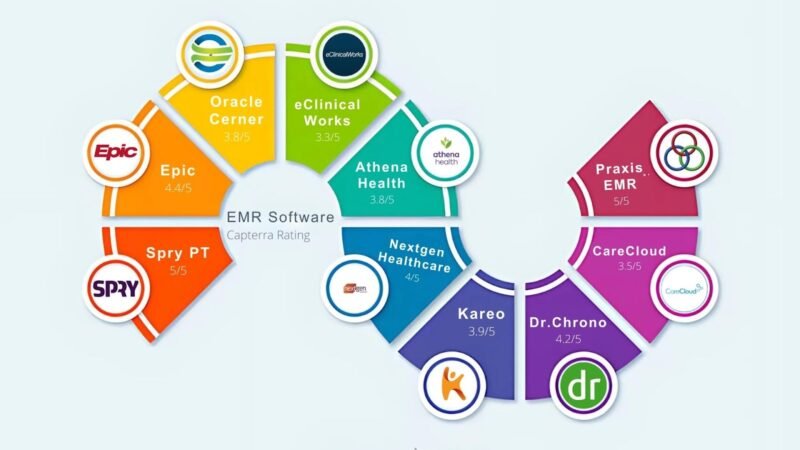6 recommendations to effectively manage contact data

Contact details are data sets that contain information about people relevant to the company’s outreach.
In the following article we will tell you how to manage them effectively.
B2B contact data management
Of all the business-to-business (B2B) business master data, contact data seems to deteriorate the fastest . Compared to products, organizations, and vendors, contact master data is more complex due to human behavior and restrictive policies. Through many years of managing master data, I have learned that the hasty reaction of buying contact databanks in bulk can help in the short term but, in the end, you will be presented with the same challenges that you started with because of life. useful brief of this type of data.
What are B2B contact details?
Contact details are data sets that contain information about people relevant to the company’s outreach. These data sets are predominantly linked or related to people’s organizational or institutional data. Contact information is personally identifiable information governed by multiple global and regional policies that protect the privacy of registrants.
Fundamental components of contact data
Personal names : first and last name of a person. Other attributes like middle name and suffix are optional.
Work Email Address : The email address of a person that is used for business communications at their workplace.
Labor position : commercial name of a person that indicates his function and seniority within the organization.
Work address: the physical address of the person’s workplace, usually their business address.
Work Phone Number – The phone number where the person can be reached by phone.
Data deterioration
In the world of data, there is a belief that contact information practically begins to expire the moment it is entered. Overall, the accuracy of contact details is believed to decline by 2.5% each month. That is about 30% per year. A recent Gartner report states that a more realistic annual value is more than double. The reasons for this are many, and the additional effects of some events will contribute to the degradation of your contact details. Here are a few:
Movement of people : people who change jobs voluntarily or involuntarily, either internally or externally.
Corporate Asset Changes – Businesses can change phone numbers, domain names, and physical locations.
Organizational changes : mergers, acquisitions, reorganizations and divestitures.
Policy changes : External policies designed to improve privacy protection may change and determine which of your contact details is viable.
COVID-19 : With the rather sudden arrival of telecommuting last year, the components of contact details and the way they are managed have changed dramatically.
Efficient management of contact details
A typical reactive tactic in contact data management is to buy it immediately when current contact data assets are believed to be deficient. Sure, you can make an impact by adding freshly “transfused” data to the pool, but for how long? In one year, your contact database will statistically decrease in profit by 30%, 70% or more. Also, keep in mind that you should allow a warm-up period for these contacts if you want them to actively interact with you. Most likely, they should start at the starting point of the shopping experience envisioned by your company. Waiting for people in a newly acquired contact database to commit to participating in one of your actions may be an overestimation of the capabilities of that dataset.
Six Recommendations for Managing an Effective Contact Database
1.Build your contacts organically
When selecting contact details, at least from a sales and marketing perspective, the goal is engagement. The interests of the contact are key. You may have the most accurate database, but what good is it if the people represented don’t find your offers relevant to their needs? Build your database with contacts who have or will have an interest in your digital environment and customer events. Create effective measurements to progressively identify them while continuously interacting with them. The contact details provided by the sellers are as good as gold. Incorporate them immediately. Above all, make sure you have current data from existing customers.
2.Enrich your current databases
As the saying goes, don’t throw the baby out with the bath water. It’s very easy to rate your current contact data assets as poor due to poor performance or anecdotes from those who require them. Work with external or third-party sources to provide up-to-date attributes on your existing contact details. As mentioned above, we are faced with data deterioration at a rate of 30% or more per year. You must have an effective enrichment schedule aligned with your organization’s data accuracy threshold. Doing it ad hoc can be a disservice to your users, as you will not achieve it. Provide an enrichment strategy and timeline, and reach out to key stakeholders.
3.Ping test emails
Promoting through email is currently the most cost-effective way to attract people to your sales and marketing programs. As with enrichment, you should proactively and periodically check the effective deliverability of your emails. This is done through a ” ping test ” service, where the provider sends a signal to your email assets and shows deliverability. This can help eliminate undeliverable emails to reduce bounce rates. And those messages that are retrieved from ping tests or the dispatch program, or both, catalog them for further enrichment and possibly archiving activities.
4.Empower your sales team
Your sales and business support teams are closer to your prospects and customers. Facilitate and encourage them to record interactions in the company’s customer relationship management (CRM) system. Perhaps integrating it into their compensation strategy as they have access to influencers and decision makers that may not be found in third party contact data sources. Make sure the CRM system can manage this data easily and efficiently.
5.Buy contacts smartly
Buying contact details can, of course, be a viable solution if done correctly. Use the aforementioned recommendations to guide your next buying initiative or, better yet, your buying strategy. Buying contact details blindly can be a very expensive gamble that will only fill your database with more records, which will include irrelevant data. Let your customer acquisition strategy guide it. Purchase contact information that is relevant to geography, job title, and deliverability. Make sure you have a deduplication process in place to avoid inadvertent communication.
6.identical ones to the same person. To reiterate a point above, newly purchased contact details may need a “know-how” period before interacting with them successfully. This means that you must synchronize your purchases with the delivery and capture schedule of the customer experience strategy.
One more point worth noting before proceeding: make sure your contact details are of legal origin and comply with all applicable laws.
6.Determine what the contact details mean for your business
For some organizations, a name, a phone number, and an email address are all pieces of information that make up contact details. In today’s digital world, this is often not enough. You need to understand the context of a contact with insights like hierarchies, branches, and location information. You may even need to deepen your knowledge with sharper approaches such as digital identifiers, intent data, and predictive analytics. Unique identifiers, such as Dun & Bradstreet DUNS ® Number , help provide a more complete picture for sales teams when they need to move beyond the basics of telemarketing and mass e-mailing.

6 recommendations to effectively manage contact data »is blocked 6 recommendations to effectively manage contact data
conclusion
Managing B2B contact data is both an art and a science. However, when you think about it, the process to carry it out is variable and changes from one organization to another. Your data management strategy must be continuously aligned with the schedule and strategy of your stakeholders. With current regulations such as the EU General Data Protection Regulation, the double opt-inand the Antispam Act of Canada, the management of this type of data becomes more complex. The best way to comply with these policies is to keep only the relevant data in your system. Minimize risk and ease your data management workload. In this sense, less is more. Protect your contact data assets and understand that this responsibility falls not just on the data team, but on the entire company.






